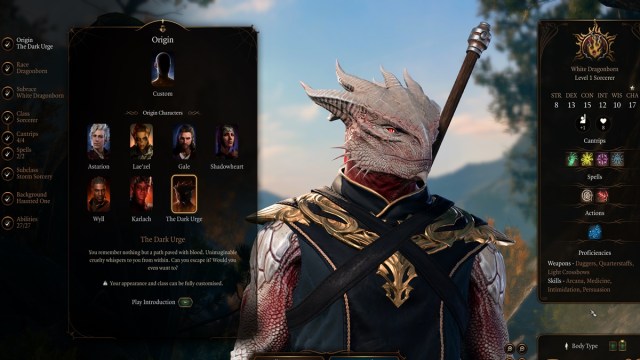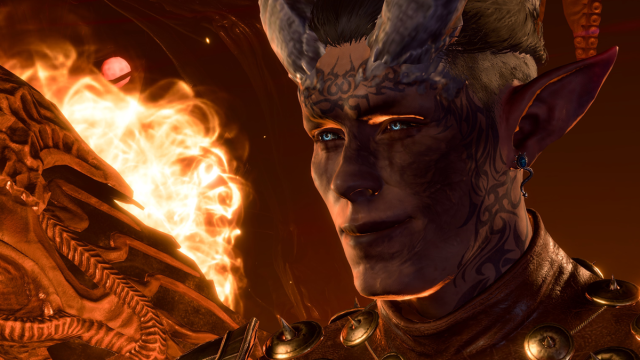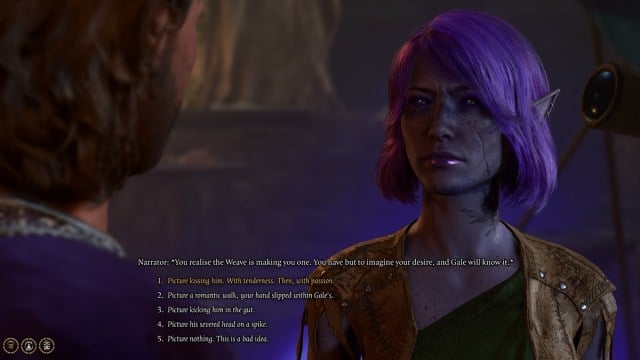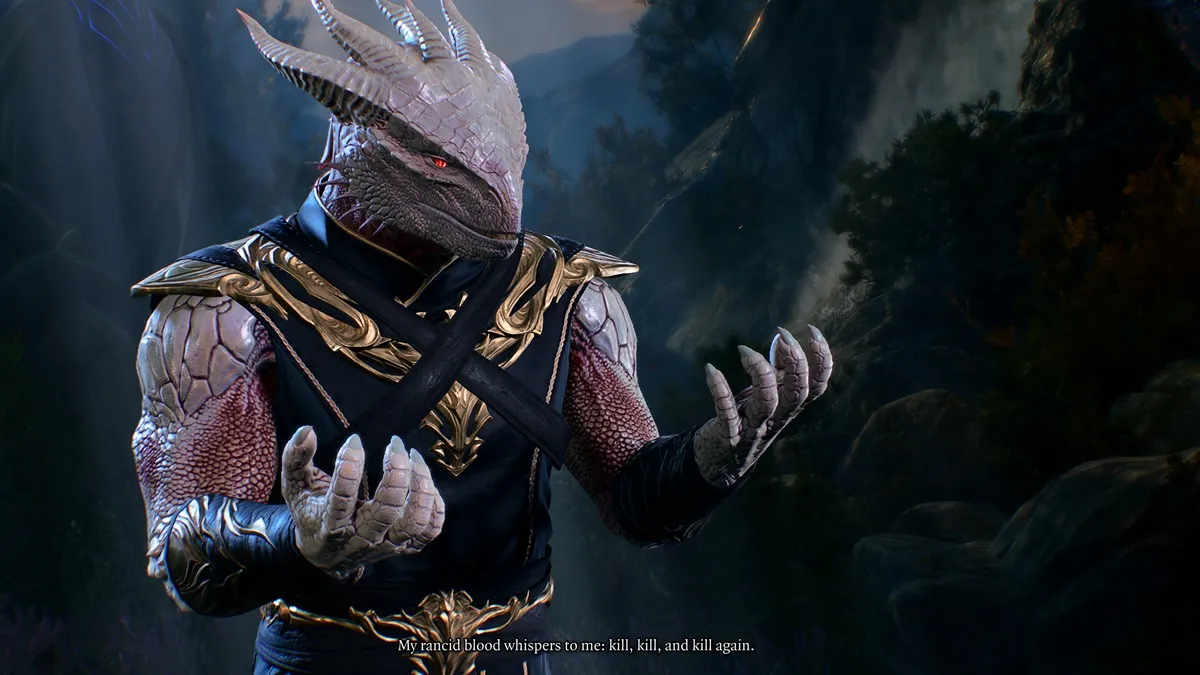The Dark Urge can come off as a bit of an enigma when starting your Baldur’s Gate 3 journey for the first time.
The rest of the six characters, with their established backstories and class type, are easy enough to wrap your head around; Astarion is a Rogue vampire, Karlach a Tiefling Barbarian, Gale a Wizard prodigy, Lae’zel a Githyanki Warrior, Shadowheart a half-elf Cleric, and Wyll a human Warlock. But what about the mysterious Dark Urge?
With the rest of these characters, we know where they come from and what their personal mission is. Sure, the details may be murky at the start, but it’s not as if the avatar itself is an unsolved puzzle, because the same could hardly be said of the seventh and final Origin, the being called the Dark Urge.
Not much is known about the Dark Urge or their past. The White Dragonborn sorcerer is suffering from amnesia, which means that even they have trouble piecing together their life after waking up in the game’s prologue. What we do know, however, is that true to their name, the Dark Urge has a bit of a mean streak… and that’s putting it lightly.
Here’s everything you need to know about the character and why their origin is especially relevant to the Baldur’s Gate 3 canon.

What’s the Dark Urge?
As already explained, the game allows you to pick one of these seven characters with predetermined backstories and special questlines. You can also opt for a custom creation and modify it from the ground up, but the thing that makes the Dark Urge so special is that it allows you to customize the profile as you see fit while also retaining that mysterious backstory.
That alone might compel players to pick the Dark Urge, as they essentially get the best of both worlds this way. But there’s a catch.
If you pick this origin, you’re going to have to level with the character’s cruel inclinations throughout your playthrough. These could range from sudden intrusive thoughts of murder and mayhem when you’re having a conversation with an NPC, or waking up at night to find yourself holding a dagger over the body of one of your companions.
The Dark Urge essentially thrives on abject malice, as warned by his cinematic introduction at the game’s beginning:
“My rancid blood whispers to me: kill, kill, and kill again. My ruined body yearns to reap death in this world, and when this foul Urge calls, it possesses my whole being. Injured beyond repair, I know nothing besides this; I must resist this Dark Urge, lest it consume my mind. I must discover what happened to me, and who I was. Before my twitching knife hand writes a tragedy in blood.”

So, is the Dark Urge just evil?
The Dark Urge is not necessarily evil, or even an absolute evil. Besides the dialogue options that clearly establish all the diabolical choices the Dark Urge can make, there are moments when the character loses control and gives in to their nature. In these moments, the player has the chance to resist the so-called Dark Urge, but as this is Baldur’s Gate 3 and every little action hinges on the toss of a die, you may not always get lucky.
A lot of players circumvent this unfortunate side effect by “save scumming,” which is the controversial practice of compulsively saving your game every 5 minutes, lest you get in a situation where, the deities forbid, you have to face the consequences of your actions. Say, your spell slots and potions are drained up after a brutal fight and your party needs to take a long rest. Well, after some regrettable developments early on in your playthrough, some Dark Urge players might feel the need to save their progress before bedding down for the night, on the off-chance that this random point in the game is where one of those nasty relapse episodes occurs.
But in short, you definitely get a say in what Dark Urges you end up indulging, even if things don’t always work out the way you want.

How is a Dark Urge run different?
Apart from the constant anxiety of having to keep your Dark Urge in check, there isn’t much that separates the Dark Urge playthrough from the rest of the origin stories.
Some players may consider the Dark Urge run to be canonical, as it ties heavily into the main story. Larian even released a prequel browser game called Blood in Baldur’s Gate which introduces players to the Dark Urge and what they’ve been up to.
(You can still play the game by heading over to the official Blood in Baldur’s Gate website. This is a fun narrative-driven experience that gives you an overall understanding of the world before the main game, and though it doesn’t actually spoil the Dark Urge twist, the suspense also won’t be the same if you know where the character came from, or who his mysterious valet Sceleritas Fel is.)
Put simply, your forgotten backstory is the mystery sitting at the heart of the Cult of the Absolute, the game’s main antagonistic faction. And as you slowly unravel the plot and learn the secrets of your past, everything will start to make sense and click together. If you choose any other origin story or a custom character, though, you’re simply another adventurer thrust into this web of intrigue.
I’ve played both as the Dark Urge and a custom character, and if my personal experience—comprising almost 200 hours of gameplay—is anything to go by, then I’d say that the Dark Urge pathway is altogether more fun to play through, not to mention more emotionally potent and compelling, narrative-wise.
When should you play as the Dark Urge?
Picking the Dark Urge presents players with more challenges, but that shouldn’t discourage you from braving the storm on your first playthrough. You may not always be in control, but the experience will be much more rewarding.
Still, if you’d prefer a more straightforward experience, with no unforeseen complications along the way (if such a thing would even be possible in Baldur’s Gate 3) then going for a custom character or one of the other six Origins might be a wiser choice.
In any event, there really isn’t a “right” way to play BG3, because no matter what path you choose, the game will find ways to surprise and startle you. And barring the pre-written content in the context of the narrative, one could argue that a Dark Urge playthrough is no more canonical than that of a random Half-Orc cleric with ambitions of grandeur, shunned from society and trying to make his own destiny out in the wide, wild world.





